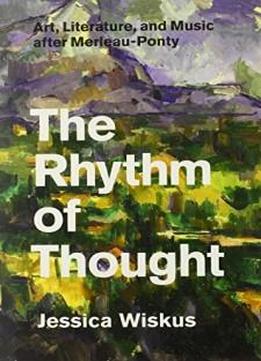
The Rhythm Of Thought: Art, Literature, And Music After Merleau-ponty
by Jessica Wiskus /
2013 / English / EPUB
6.6 MB Download
Between present and past, visible and invisible, and sensation
and idea, there is resonance—so philosopher Maurice Merleau-Ponty
argued and so Jessica Wiskus explores in
Between present and past, visible and invisible, and sensation
and idea, there is resonance—so philosopher Maurice Merleau-Ponty
argued and so Jessica Wiskus explores inThe Rhythm of
Thought
The Rhythm of
Thought. Holding the poetry of Stéphane Mallarmé, the
paintings of Paul Cézanne, the prose of Marcel Proust, and the
music of Claude Debussy under Merleau-Ponty’s phenomenological
light, she offers innovative interpretations of some of these
artists’ masterworks, in turn articulating a new perspective on
Merleau-Ponty’s philosophy.
. Holding the poetry of Stéphane Mallarmé, the
paintings of Paul Cézanne, the prose of Marcel Proust, and the
music of Claude Debussy under Merleau-Ponty’s phenomenological
light, she offers innovative interpretations of some of these
artists’ masterworks, in turn articulating a new perspective on
Merleau-Ponty’s philosophy.
More than merely recovering Merleau-Ponty’s thought, Wiskus
thinks according to it. First examining these artists in relation
to noncoincidence—as silence in poetry, depth in painting, memory
in literature, and rhythm in music—she moves through an array of
their artworks toward some of Merleau-Ponty’s most exciting
themes: our bodily relationship to the world and the dynamic
process of expression. She closes with an examination of
synesthesia as an intertwining of internal and external realms
and a call, finally, for philosophical inquiry as a mode of
artistic expression. Structured like a piece of music itself,
More than merely recovering Merleau-Ponty’s thought, Wiskus
thinks according to it. First examining these artists in relation
to noncoincidence—as silence in poetry, depth in painting, memory
in literature, and rhythm in music—she moves through an array of
their artworks toward some of Merleau-Ponty’s most exciting
themes: our bodily relationship to the world and the dynamic
process of expression. She closes with an examination of
synesthesia as an intertwining of internal and external realms
and a call, finally, for philosophical inquiry as a mode of
artistic expression. Structured like a piece of music itself,The Rhythm of Thought
The Rhythm of Thought offers new contexts in which to
approach art, philosophy, and the resonance between them.
offers new contexts in which to
approach art, philosophy, and the resonance between them.











